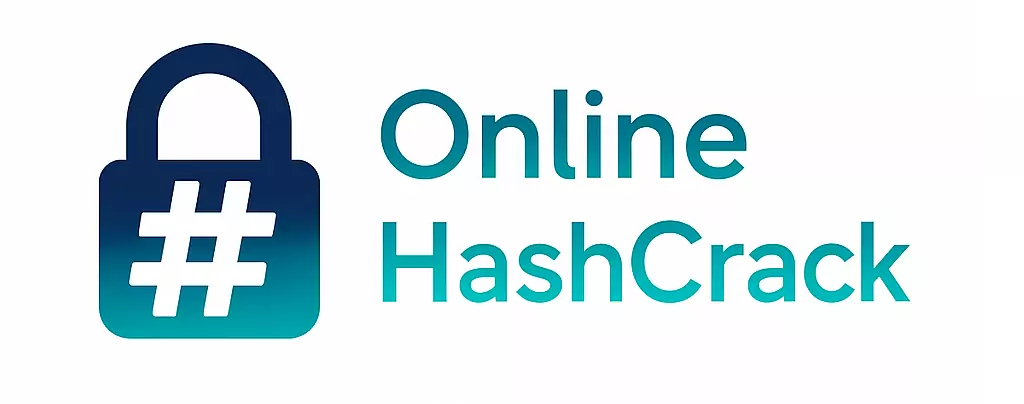1. Introduction
Capture-The-Flag (CTF) competitions are at the heart of modern ethical hacking and cybersecurity education. These gamified challenges test and sharpen participants’ skills in real-world scenarios, making them a critical training ground for aspiring security professionals. Whether you’re a student, a cybersecurity enthusiast, or a seasoned penetration tester, mastering CTF strategies can significantly boost your technical prowess and problem-solving abilities.
In this comprehensive guide, we’ll explore proven CTF strategies to help you capture the flag like a pro. From understanding the competition formats to building effective teams, setting up your environment, and tackling core challenge categories, you’ll gain actionable insights to elevate your performance in any CTF event.
2. Understanding CTF Competitions
2.1 What is Capture-The-Flag?
Capture-The-Flag (CTF) is a cybersecurity competition format where participants solve security-related challenges to find hidden pieces of data known as flags. These flags are typically strings embedded within vulnerable applications, encrypted files, or network traffic. The primary goal is to discover and submit as many flags as possible within a set time frame.
CTFs simulate real-world cyber threats, making them invaluable for hands-on learning and skills development. They are widely used by organizations, universities, and security communities to foster talent and encourage ethical hacking practices. For a deeper dive into CTF history and formats, see the FIRST CTF Guide.
2.2 Types of CTF Challenges
CTF competitions generally feature two main formats:
- Jeopardy-Style: Participants solve independent challenges across categories such as cryptography, web exploitation, and forensics. Each challenge awards points based on difficulty.
- Attack-Defense: Teams defend their own vulnerable systems while attacking others. This format emphasizes both offensive and defensive skills.
Some events blend both styles or introduce unique twists, but the core objective remains: find and capture the flag.
2.3 CTF Platforms and Formats
Popular CTF platforms include CTFtime, Hack The Box, and TryHackMe. These platforms host regular events and provide practice labs for all skill levels.
CTFs can be held online or on-site, individually or in teams, and may last from a few hours to several days. Understanding the event’s format is crucial for developing effective CTF strategies.
3. Essential Skills for CTF Success
3.1 Technical Knowledge Areas
To excel in CTFs, you need a strong foundation in several cybersecurity domains:
- Networking: TCP/IP, protocols, packet analysis
- Operating Systems: Linux and Windows internals
- Programming: Python, C, Bash scripting
- Cryptography: Classical and modern ciphers, cryptanalysis
- Web Technologies: HTTP, web app vulnerabilities, OWASP Top 10 (OWASP)
- Reverse Engineering: Disassembly, decompilation, binary analysis
- Forensics: File systems, memory dumps, network traffic
Regularly updating your knowledge with resources from organizations like SANS Institute and CISA is highly recommended.
3.2 Problem-Solving Mindset
CTFs reward creative thinking and persistence. The best participants approach each challenge with a problem-solving mindset—breaking down complex problems, hypothesizing solutions, and iterating quickly. Don’t be afraid to experiment or fail; every attempt is a learning opportunity.
3.3 Time Management
Effective time management is crucial in CTFs. Prioritize challenges based on your strengths and the point values. Allocate time blocks, avoid tunnel vision, and know when to move on. Many top teams use time-tracking tools or shared spreadsheets to monitor progress and maximize efficiency.
4. Setting Up Your CTF Environment
4.1 Recommended Tools and Software
A well-equipped toolkit is essential for CTF success. Commonly used tools include:
- Burp Suite – Web vulnerability scanner (PortSwigger)
- Wireshark – Network protocol analyzer (Wireshark)
- Ghidra – Reverse engineering suite (Ghidra)
- John the Ripper – Password cracker (Openwall)
- Binwalk – Firmware analysis tool (GitHub)
- CyberChef – Data format transformation (CyberChef)
- Metasploit – Exploitation framework (Metasploit)
Many CTF participants use Kali Linux or Parrot OS as their base operating system, as these come preloaded with essential security tools. For those looking to optimize their password cracking capabilities, reviewing Hashcat usage guides and benchmarking resources can help select the best hardware and configurations.
4.2 Creating a Safe Testing Lab
Always conduct CTF activities in a safe, isolated environment to avoid accidental harm to your primary system or network. Set up virtual machines (VMs) using VirtualBox or VMware, and consider using snapshots for quick recovery. For advanced setups, tools like Docker can help manage isolated containers for specific challenges. For hands-on guidance, see the Building a Home Lab: Ethical Hacking Setup tutorial.
For best practices on lab setup, refer to CIS Cybersecurity Lab Setup Guide.
4.3 Configuring Your Workflow
Organize your workflow for maximum productivity:
- Use version control (e.g., Git) for scripts and notes.
- Maintain a structured notes system (Obsidian, Notion, or Markdown files).
- Automate repetitive tasks with custom scripts.
- Set up a shared folder or cloud drive for team collaboration.
A streamlined workflow reduces friction and helps you focus on solving challenges efficiently.
5. Core CTF Categories and Strategies
5.1 Cryptography Challenges
Cryptography challenges test your ability to analyze and break ciphers, decode obfuscated messages, and exploit weaknesses in cryptographic implementations. Common tasks include:
- Cracking classical ciphers (Caesar, Vigenère, RSA)
- Identifying and exploiting flawed encryption schemes
- Solving steganography puzzles
Strategy: Familiarize yourself with common algorithms and tools like CyberChef and Hashcat. Brush up on number theory and modular arithmetic. For advanced cryptanalysis, refer to Cryptopals Crypto Challenges. To strengthen your foundation, explore Hash Algorithms Explained: Secure Password Storage for a deeper understanding of how cryptographic hashes are used in CTFs.
5.2 Reverse Engineering
Reverse engineering involves analyzing binaries or software to understand their logic and extract hidden information. Typical tasks include:
- Disassembling executables to find flags
- Bypassing software protections
- Analyzing malware samples
Strategy: Master tools like Ghidra, IDA Free, and radare2. Learn to read assembly code and use debuggers (e.g., GDB). Practice with open-source crackmes and tutorials from OffSec.
5.3 Web Exploitation
Web exploitation challenges focus on finding and exploiting vulnerabilities in web applications. Common vulnerabilities include:
- SQL Injection
- Cross-Site Scripting (XSS)
- Remote Code Execution (RCE)
- Authentication bypasses
Strategy: Study the OWASP Top 10. Use Burp Suite for intercepting and modifying HTTP requests. Automate common attacks with scripts, but always analyze the application logic for custom vulnerabilities. For tips on crafting effective wordlists and boosting your web challenge success, check out Details about Wordlist Attacks.
5.4 Binary Exploitation
Binary exploitation (pwn) challenges require you to exploit memory corruption bugs such as buffer overflows, format string vulnerabilities, and use-after-free errors.
- Overflowing buffers to hijack control flow
- Leaking memory addresses to bypass protections
- Crafting payloads for shell access
Strategy: Learn about stack canaries, ASLR, and ROP chains. Use pwntools and GDB for exploit development. Practice on platforms like pwnable.kr and exploit.education.
5.5 Forensics
Forensics challenges involve analyzing digital artifacts to recover hidden data or reconstruct events. Tasks may include:
- Extracting files from memory dumps
- Analyzing network traffic captures
- Recovering deleted files from disk images
Strategy: Use tools like Autopsy, Volatility, and Wireshark. Develop a systematic approach to analyzing evidence. Refer to SANS Forensics Resources for methodologies. If you're handling packet capture files, using a pcap and cap file converter to hccapx can streamline WPA/WPA2 password cracking workflows.
5.6 Miscellaneous and Trivia
Miscellaneous challenges can include steganography, programming puzzles, or trivia about cybersecurity history. These often reward creative thinking and broad knowledge.
Strategy: Stay curious and explore a wide range of topics. Use online resources and cheat sheets for quick reference.
6. Team Dynamics and Collaboration
6.1 Building a Balanced Team
A successful CTF team combines diverse skill sets. Aim for a mix of:
- Web application experts
- Reverse engineers
- Binary exploit developers
- Cryptographers
- Forensics analysts
Teams with complementary strengths can tackle a wider range of challenges and adapt to unexpected problems.
6.2 Effective Communication
Use real-time communication tools (Discord, Slack, Mattermost) to share findings, coordinate efforts, and avoid duplicated work. Establish clear channels for different challenge categories and keep discussions focused.
6.3 Dividing and Conquering Tasks
Assign challenges based on individual strengths and interests. Rotate tasks to avoid burnout and ensure everyone gains exposure to new areas. Use shared documents or Kanban boards to track progress and flag blockers.
7. Approaching CTF Challenges
7.1 Reconnaissance and Information Gathering
Start every challenge with thorough reconnaissance. Read the prompt carefully, identify inputs and outputs, and gather as much information as possible. For web and network challenges, use tools like nmap, dirbuster, and Wireshark to map the attack surface.
Document your findings and hypotheses before diving into exploitation.
7.2 Exploit Development and Testing
Develop and test exploits incrementally. Validate each step, monitor for unexpected behavior, and keep detailed notes. Use version control for scripts and payloads. Always test in a controlled environment to avoid unintended consequences.
7.3 Flag Submission and Scoring
Once you discover a flag, submit it promptly according to the competition’s rules. Double-check the format (e.g., CTF{flag_here}) and avoid brute-forcing or guessing, as this may incur penalties. Track your team’s score and adjust your strategy based on the leaderboard.
8. Learning from Writeups and Community Resources
8.1 Analyzing CTF Writeups
After each event, study writeups from top teams and participants. These detailed solutions reveal alternative approaches, tool usage, and creative exploits. Analyze both successful and failed attempts to broaden your understanding.
Find high-quality writeups on CTFtime Writeups and GitHub CTF repositories.
8.2 Leveraging Open-Source Tools
The open-source security community offers a wealth of tools and scripts for CTFs. Explore repositories on GitHub and contribute improvements. Regularly update your toolkit and share your own scripts to help others.
8.3 Participating in CTF Communities
Join CTF-focused forums, Discord servers, and mailing lists to stay informed about upcoming events, new tools, and emerging techniques. Engage with communities like r/ctf and CTF Discord for networking and collaboration.
9. Common Pitfalls and How to Avoid Them
9.1 Time Wasters
Avoid spending excessive time on a single challenge. Set time limits, and if you’re stuck, switch tasks or seek input from teammates. Use the Pareto principle—focus on challenges with the highest point-to-effort ratio.
9.2 Misreading Challenge Prompts
Carefully read and re-read challenge descriptions. Many flags are hidden in plain sight or hinge on subtle clues. Highlight keywords and clarify ambiguities before starting your analysis.
9.3 Overlooking Simple Solutions
Don’t overcomplicate your approach. Many CTF challenges have straightforward solutions that are easily missed when overthinking. Always try basic techniques before attempting advanced exploitation.
10. Continuous Improvement and Practice
10.1 Tracking Progress
Maintain a CTF journal to record solved challenges, failed attempts, and lessons learned. Review your notes regularly to identify patterns and areas for improvement.
10.2 Setting Goals for Growth
Set specific, measurable goals for each competition or practice session. Focus on mastering new categories, improving speed, or contributing to team strategy. Celebrate milestones to stay motivated.
10.3 Recommended Practice Resources
Enhance your skills with these trusted resources:
- CTFtime – Event calendar and archives
- picoCTF – Beginner-friendly challenges
- Hack The Box – Realistic labs and CTFs
- TryHackMe – Guided learning paths
- Root Me – Diverse challenge categories
- Hacker101 – Web security training
11. Conclusion
CTF competitions are more than just games—they are immersive learning experiences that hone your ethical hacking skills and prepare you for real-world cybersecurity challenges. By mastering core CTF strategies, building effective teams, and embracing continuous learning, you can capture the flag like a pro and contribute to a safer digital world.
Stay curious, practice regularly, and engage with the global CTF community to keep your skills sharp and your knowledge up to date.
12. Further Reading and Resources
- FIRST CTF Guide
- SANS Institute
- OWASP
- CISA
- ENISA CTF Resources
- MITRE
- IC3
- CIS
- ISACA: CTF Competitions


